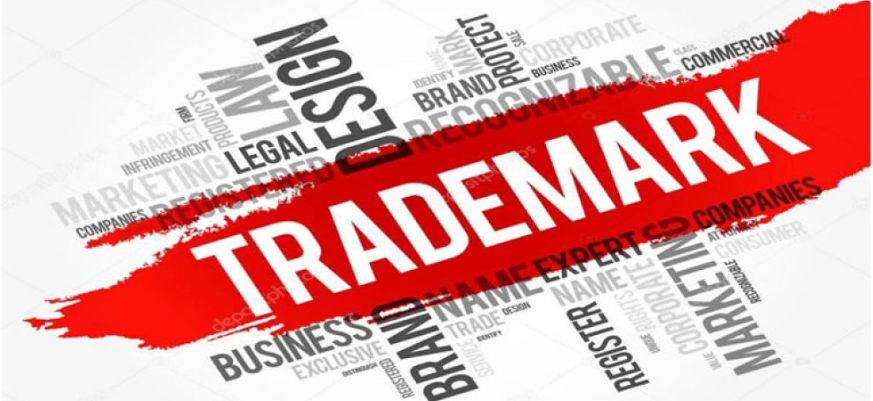WGU D216 OA Study Guide I - 2025 | Understanding Intellectual Property📖
Welcome to the exciting world of legal and human rights used in words, logos, inventions, and even in a jingle! Suppose a person goes to buy something and coincidentally notices the shoe having an emblem resembling the swoosh design. Your brain is the first thing that blinks, Nike! That is how one powerful trademark can work. But how do we deal with a situation where someone imitates that swoosh, and uses it in ways that cause confusion or lessen its worth? Or what about when someone composes a chart-topping tune, develops an innovative gizmo, or constructs an object of artistic wonder—how is it defended? Trademark, copyright, and patent laws come into play at that point.
This article explores key concepts in intellectual property protection and trademark law:
- Trademark vs. Copyright vs. Patent: Trademarks protect brand names and logos, copyrights safeguard creative works like books and music, and patents grant exclusive rights to inventions, ensuring legal protection for intellectual property.
- Trademark Dilution, Registration, and Infringement: Trademark dilution weakens a brand’s uniqueness, registration grants exclusive rights, and infringement occurs when unauthorized use causes confusion or damages a brand’s identity.
Sounds like a lot? Don’t worry! We will take all of the above concepts and walk you through all these steps with non-technical examples, interesting analogies, and a simple conversational style. It does not matter if you are a WGU D216 OA candidate or you have a general interest in how the law preserves creativity and innovation, this guide will provide you with all the information you will require. Ok, let’s get down to the real business and find out why intellectual property laws are the knights in shining armor of creative and business people.
How to Use This Guide for the WGU D216 OA Exam?📖
The D216 Business Law for Accountants OA exam at WGU evaluates your understanding of intellectual property laws, trademark protection, and legal regulations for business. This guide simplifies the key concepts of trademark vs copyright vs patent and trademark dilution, trademark registration, and trademark infringement to help you grasp the topics tested in the exam.
We also provide exam-style questions and practical applications to ensure you’re fully prepared for the questions on the WGU D216 OA exam.

Understanding Trademark, Copyright, and Patent For D216 OA 📝
Trademarks, copyrights, and patents can be described as extraordinary assets that guard inventions within the realm of asset protection. It is time to look at all these notions step by step to understand the various differences between them, their functions, and their significance.

What is a Trademark?
Trademark means any symbol, word, phrase, or device used to identify the origin of products and services from others. This is a little like having a special emblem that can help clients identify a certain brand on the market. Trademarks are crucial to businesses since they help make business recognizable and establish a consumer base.
Examples of Trademarks:
- Coca-Cola®: The name is the trademark, the script logo is also the trademark, and the shape of the bottle also belongs to the trademark. Coca-Cola also saw to it that all common brand colors were trademarked including its favorite red color that it used, said to exhibit thorough brand coverage.
- Nike®: The logon and the brand name have become representatives of product quality in the athletic industry. Nike is protecting its trademarks to maintain its identity and due to the fact that trademarks have great importance.
- McDonald’s®: It is often termed as ‘Mc’ to avoid copycat businesses since the prefix ‘Mc’ is copyrighted to make it stand out.
Why Do Trademarks Matter?
It removes confusion because consumers are able to clearly identify the difference between the different brands mainly by the use of trademarks. For instance, if another person used the Nike logo on their shoes it would deceive the public and affect Nike permanently. Trademark also enables business people to protect their goodwill and position in the market. They can go on forever depending on when they will be tapped frequently and subsequently redecorated.
Legal Framework for Trademarks:
Trademarks in the United States are protected by federal law according to the Lanham Act. Cor鼠registration with the United States Patent and Trademark Office (USPTO) is not compulsory but holds certain benefits such as you get protection throughout the United States of America and you can sue legal means against the violators.
What is Copyright?
Copyright on the other hand protects original work of authorship in literary, artistic, and musical works. It also guarantees that only the creators have a reserved ownership of a particular work for instance the right to publish, make copies, or transform. Copyright on an object or work is acquired as soon as the work is created and this applies to both published and unpublished work.
Examples of Copyrighted Works:
- Books and Stories: Harry Potter books by J.K. Rowling are under copyright law; therefore, there cannot be copies or duplicate works without permission.
- Disney Films: Mickey Mouse and ‘Frozen’ is a legal tender hence Disney is in charge of utilization and getting revenue through authorization.
- Songs and Music: Famous songs are copyrighted, allowing artists to earn royalties when their music is played, used in movies, or streamed online.
Why is Copyright Important?
Copyright promotes creativity through the ability to monetize products as well as control their usage. For example, due to the lack of the rights regulated by copyright, anyone can produce and sell a writer’s book without paying the writer the money they deserve. Copyright lasts for the natural life of the creator plus seventy years, which offers a good number of years to the holder of the creative work.
Legal Framework for Copyright:
Copyright is governed by the Copyright Act. While registration with the U.S. Copyright Office is optional, it strengthens the creator’s ability to enforce their rights in court.
What is a Patent?
Patent affords its owners protection over the innovation for a specific period of time thus no one can make or use it commercially without the inventor’s consent. Patents pertain to new methods and processes, machines, or manufactures and are important to increase invention.
Examples of Patented Inventions:
- Apple’s iPhone Technology: Apple’s patents cover both the design and functionality of its iPhones, ensuring competitors cannot copy their innovative features.
- Pharmaceutical Drugs: Companies like Pfizer patent drugs to maintain exclusive rights to manufacture and sell them for a specific period, recovering their investment in research and development.
- 3D Printing Technology: Companies patent specific processes and materials used in 3D printing, securing their innovations against replication.
Why Are Patents Necessary?
Patents prevent others from using innovations by offering inventors a temporary exclusive right to those products. It enables them to recover their costs incurred in coming up with a product or a service apart from being able to disseminate the innovation to the whole world. However, patents mean that the details of the invention must be made public and they are time-limited – usually only for 20 years from the date of the application.
Legal Framework for Patents:
Patents are governed by federal law and must be filed with the USPTO. The application process involves proving that the invention is novel, non-obvious, and useful.
Key Differences Between Trademark, Copyright, and Patent
Feature | Trademark | Copyright | Patent |
What it Protects | Brand identity | Creative works (art, music, books) | Inventions (machines, drugs, processes) |
Examples | Logos, brand names | Books, movies, songs | New machinery, software algorithms |
Duration | Indefinite (if renewed) | Life of the creator + 70 years | 20 years from the filing date |
Registration | Not mandatory but useful | Automatic upon creation; registration-optional | Mandatory; requires approval |
Common Misconceptions
- Trademarks vs. Copyrights: Many people confuse the two. Trademarks focus on branding (like logos), while copyrights protect creative content (like books or songs).
- Overlap: Some works may be protected by both trademark and copyright laws. For example, a logo could be both a copyrighted artistic work and a registered trademark.
- Trademarks vs. Patents: Trademarks protect brand identity, while patents protect functional inventions. They serve different purposes and cannot replace one another.
Importance For D216 OA
For any individual who wants to safeguard his asset, there is crucial knowledge to learn and this is as follows, a distinction between the trademarks, copyrights, and patents. But trademarks help in protecting images while copyrights protect artwork, and patents protect inventions on the other hand. It has the legal ways of ensuring that the creators, merchants as well and inventors are sufficiently paid back their efforts, monies, and creativity placed in an invention or idea and also promotes investing and creativity. However as learners of WGU D216, to be ready for the warfare of the complexities of intellectual property as experienced in the workplace, then understanding these four concepts is very important.
Now it might be proper to shed some more light on Trademark dilution, Trademark registration, and/or Trademark infringement and the reason why all these laws are so vital for the successful branding and management of a brand.
Trademark Dilution, Trademark Registration, and Trademark Infringement For D216 OA📝
Trademarks are critical in as much as they serve to protect the image and reputation of businesses. They act as a barrier against misuse and assist in sustaining the uniqueness of certain brands. In subsequent sub-topics, the authors will expand on the understanding of what trademark dilution means, and the procedures of trademark registration, as well as explain the concept of trademark infringement.
What is Trademark Dilution?
Trademark dilution exists when a famous trademark is blurred or lessened, despite the likelihood that the allegedly infringing product or service will never be in direct confrontation or may not cause confusion to the public. This idea is not as broad as most people think, and it is built for the purpose of safeguarding the exclusive assets and brand images of famous trademarks.
Types of Trademark Dilution:
- Blurring:
- Trademark dilution of this sort occurs when a highly recognized trademark is used in relation to unrelated products or services. For instance, should a startup choose to dub his or her line of running shoes the “Google Sneakers,” the conjunction would obscure the special rapport between “Google” and technology services.
- Blurring weakens the cachet of the well-known symbol because instead of establishing a unique impression in the minds of buyers, it forms related ones.
- Tarnishment:
- Tarnishment occurs when a famous trademark is linked to inferior or unsavory products, damaging its reputation. For instance, using the “Rolex” brand on a line of low-quality knock-off watches would tarnish the luxury image of Rolex.
- Tarnishment can harm consumer trust and reduce the perceived value of the original brand.
Legal Protection Against Dilution:
- The Federal Trademark Dilution Act (FTDA) in the U.S. provides protection for famous trademarks against blurring and tarnishment.
- Unlike infringement cases, dilution claims do not require proof of consumer confusion. This allows famous marks to protect their identity even when the infringing product or service is unrelated.
- However, only widely recognized trademarks qualify for dilution protection under this law.
Why is Protecting Against Dilution Important?
Famous trademarks often carry significant goodwill and market value. Dilution can erode this goodwill, impacting consumer perception and trust. By preventing dilution, businesses ensure that their trademarks remain strong and effective in distinguishing their products and services.
What is Trademark Registration?
Trademarking relates to the formal registering of a specific trademark with the services of the government or in the case of America it is with the United States Patent Office abbreviated USPTO. Trademarks can also be registered and used without registration and have some significant legal benefits and enhanced abilities for the proprietor of the trademark once registered.
The Registration Process:
- Conduct a Trademark Search:
- Before applying, it’s essential to check whether similar trademarks already exist. This step helps avoid conflicts and potential rejections during the application process.
- Prepare and Submit the Application:
- The application must include details about the trademark, such as its design, the goods or services it represents, and how it will be used in commerce.
- Accurate classification of goods or services is crucial to ensure the trademark’s scope of protection aligns with the owner’s business.
- Examination by the USPTO:
- The USPTO reviews the application to ensure the trademark meets legal requirements and does not conflict with existing marks.
- Publication and Opposition:
- If the application passes the examination, the trademark is published in the USPTO’s Official Gazette. During this period, others can file objections if they believe the trademark infringes on their rights.
- Approval and Registration:
- If no valid objections are raised, the trademark is approved and registered. The owner receives a certificate of registration as proof of their rights.
Benefits of Trademark Registration:
- Legal Presumption of Ownership:
- Registered trademarks establish ownership rights, making it easier to enforce them in legal disputes.
- Nationwide Protection:
- Trademark owners gain exclusive rights to use the mark across the U.S., preventing unauthorized use in all 50 states.
- Enhanced Legal Remedies:
- Registration allows owners to seek statutory damages and attorney’s fees in cases of infringement, remedies not typically available for unregistered marks.
- International Protection:
- Through treaties like the Madrid Protocol, registered trademarks can be extended to other countries, offering global protection.
Why is Registration Important?
For that reason the unregistered trademarks are called ‘common law trademarks’ and they relay rather weak information, which concerns only the specified area of usage. Through registration, the trademarks have better legal backing since the trademark owners are able to protect their brands throughout the nation and other nations in the world.
What is Trademark Infringement?
This means that a person uses a trademark identical to the registered trademark irrespective of the intention to confuse customers on the origin of the good or service. Infringement undermines the traditional protocols of obtaining a trademark and alters its purpose; the author concludes that infringement is a negative process for the owner of the trademark and for the trademark user.
Key Elements of Trademark Infringement:
- Similarity Between Marks:
- There is a requirement mandating that the mark being used violates the trademark and enjoys a ‘high degree’ of similarity with the mark being protected. For example, it is possible for a company that was lately introducing a new brand of shoes called ‘Nikey’ to create confusion with ‘Nike®’ brand name.
- Use in Commerce:
- Infringing marks mean that they must be used as a component of a trademark in the offer for sale and or advertising identifying the goods and services offered. Generally, if you are using it for personal or for non-business use then there should not be a violation of the law.
- Likelihood of Confusion:
- The first and foremost question that comes to the mind of the analyst is from the fact whether the infringing mark could cause confusion in the mind of the public that it is associated with the trademark owner.
Legal Remedies for Trademark Infringement:
- Injunctions:
- Judgment can be inter alia granted ordering the infringing party to refrain from further use of the mark.
- Monetary Damages:
- A trademark owner may sue for any recovery of damages, including profits gained by the infringing individual.
- Destruction of Infringing Goods:
- The infirming trademark may be either ordered to be destroyed or seized by the courts.
- Attorney’s Fees:
- Where the infringement has been done willfully, the infringing party is liable to refund the legal costs of the trademark owner.
Differences Between Dilution, Registration, and Infringement
Aspect | Trademark Dilution | Trademark Registration | Trademark Infringement |
Purpose | Protects the uniqueness of famous marks | Provides legal recognition and protection | Prevents consumer confusion |
Applicability | Applies only to famous trademarks | Applies to any distinctive mark | Applies to any registered trademark |
Consumer Confusion | Not required | Not applicable | Required |
Intent | Not necessary | N/A | Intent or likelihood of confusion is crucial |
Types of Harm | Blurring or tarnishment | N/A | Misleading customers |
Why Are These Protections Important?
Trademark is an essential legal and economic resource as they help launch and promote companies’ products, as well as create customer loyalty. They lose their value, reputation, and distinctiveness when there are no such safeguards in place that protect these trademarks. Trademark dilution laws help protect the identity characteristic of the famous marks, registration enhances legal rights and infringement laws help to prevent misuse which leads to deception of consumers.
With such knowledge, many firms and persons can realize ways of accessing intellectual property law in order to secure their stakes and stand out in the market.
Importance For D216 OA
Most modern markets are competitive, and this makes it important to have trademark laws such as the dilution, registration, and infringement laws. All these protections are important and serve to help a trademark maintain its prescribed value and uniqueness. It is key to note that, as students of the WGU D216 class, the mastery of these concepts will help improve your stand when dealing with intellectual property in order to promote the provision of a fair and reliable market.
Tired of reading blog articles?
Let’s Watch Our Free WGU D216 Practice Questions Video Below!

Wrapping Up: Intellectual Property Made Easy for WGU D216📄
Many thanks for your company again, and on reaching the end of this trip through intellectual property. By now you are aware of the ways in which trademarks, copyrights, and patents apply in defending creativity, innovation, and business identities. You have also discussed the function of trademark registration and the way it protects brands from being diluted or infringed. While some of these concepts may appear quite arcane at first blush, they are effective lawyering tools and crucial areas in the WGU D216 OA.
These and many more could be the questions on your final assessment therefore I encourage you to take time to understand these topics. Just remember that studying what distinguishes a copyright from a trademark or how dilution may differ from infringement will not only make you a better player in the OA but will also provide you with the sort of real-world experience of business law that many students never get.
Intellectual property laws are like a safety net for creators and businesses, ensuring their hard work gets the recognition and protection it deserves. As you continue your studies, keep these lessons in mind, and don’t hesitate to revisit this guide whenever you need a quick refresher. You’ve got this!
Good luck with your WGU D216 OA, and may you ace every question with confidence and clarity!






